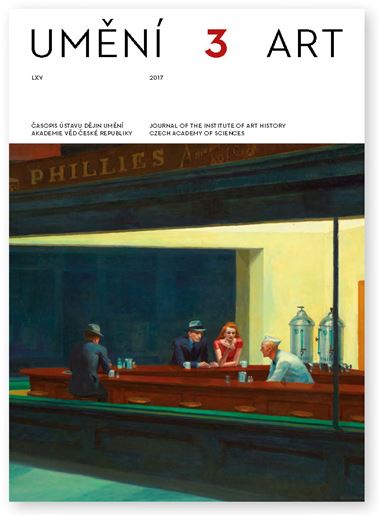Peter Megyeši
„Et benedictus fructus ventris tui.“ K ikonografii Navštívení ve středověkých nástěnných malbách v Ochtinej a Koceľovciach
The medieval wall paintings in the churches in Ochtiná (Ochtina/Martonháza) and Koceľovce (Gecelfalva) in Slovakia have been the subject of sustained interest from art historians since the end of the 19th century, when they were discovered, uncovered, and written on by István Gróh. The wall paintings were later studied by Hungarian, Czech, and Slovak art historians: Dénes Radocsay, Mária Prokopp, Vlasta Dvořáková, Milan Togner, Katarína Biathová, Ján Bakoš and Ivan Gerát. This article focuses on the depiction of foetuses in the Visitation scenes, an element of the paintings that has thus far been overlooked. Among the authors cited above only István Gróh, in 1895, noticed this when describing the wall paintings in Koceľovce. The foetuses of Jesus and John the Baptist are also depicted in a wall painting preserved in nearby Ochtiná. The paintings in Ochtiná and Koceľovce (dating from 1377–1400) are among the earliest of the known and documented examples of foetus type Visitation scenes in wall paintings (Rhäzüns in Switzerland 1370–1380, Toruń in Poland 1390–1400, Drásov in Moravia approx. 1370). Many wall paintings of the Visitation scene that include a depiction of Jesus and John the Baptist in their mothers’ wombs can be found in monasteries or in places where there are justified grounds to assume that there was a monastery involved in creating the painting’s iconographic programme. Were there any such ties in the case of Ochtiná and Koceľovce? Here a connection to the spirituality of the Franciscans has been identified in the wall paintings: Katarína Biathová has pointed out how expansive the scenes are and the elaborate depiction of the events of Easter week, while, similarly, Mária Prokopp has noted evidence of Franciscan mysticism in the Passion cycles and believes that there were members of this order who were priests in both villages. An intermediary role was likely played by the Franciscan monastery in nearby Kameňany (Kövi) that was destroyed during the incursions of the Hussites, the existence of which is only documented in reports from the second half of the 14th century.
Full-text in the Digital Library of the Czech Academy of Sciences:
https://kramerius.lib.cas.cz/uuid/uuid:6fe19489-3971-4d86-89c8-556afc66ab2b
< back

